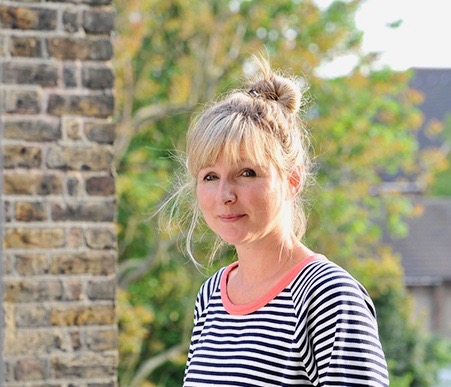8 resilient trees that will thrive in cities – these species will absorb pollution, cool the air and grow in compact spaces with minimal maintenance
Choose these tree species for greener, cooler, more natural urban spaces
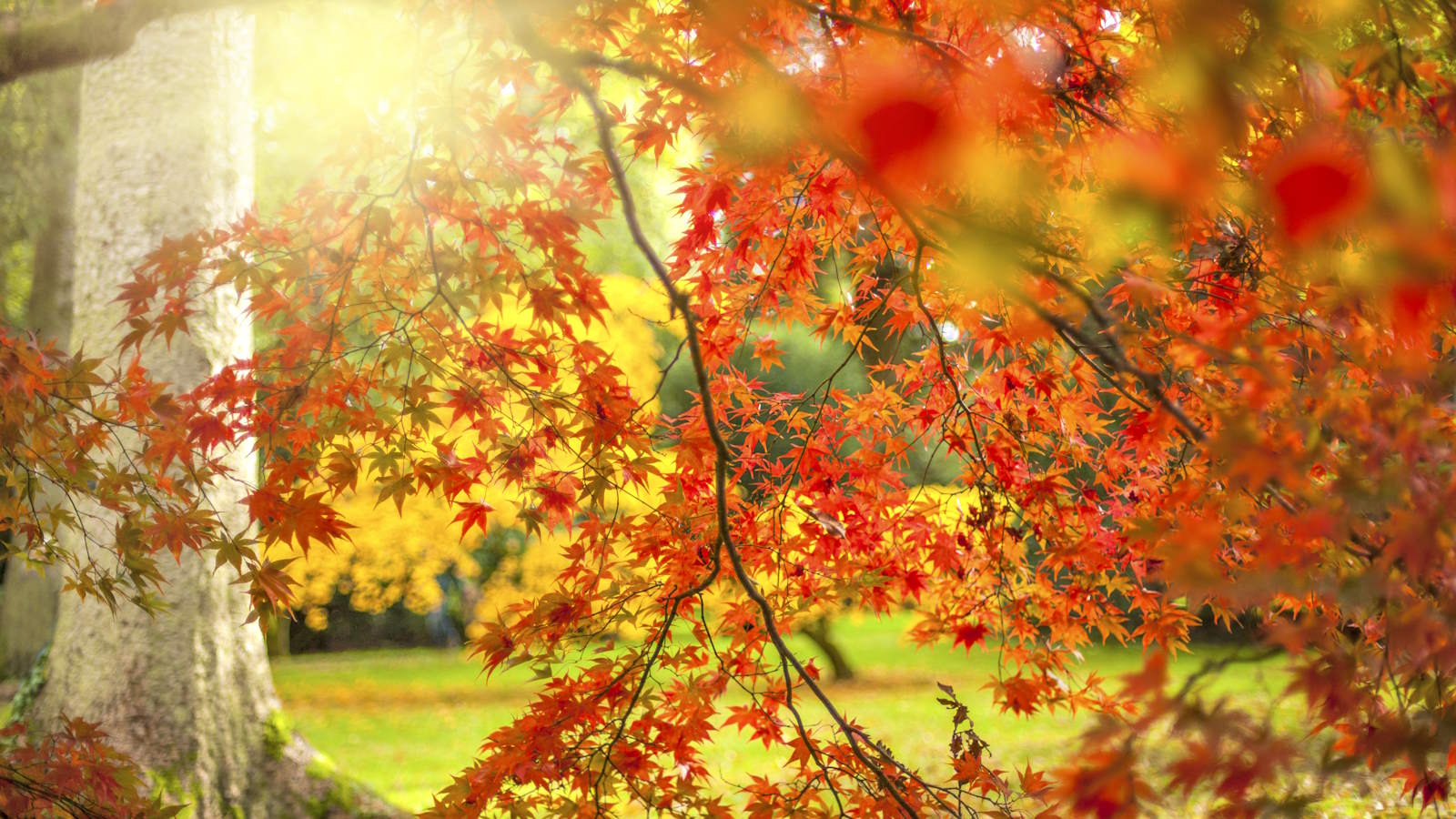
- 8 resilient trees that will thrive in cities
- 1. Eastern Redbud (Cercis canadensis)
- 2. Black Tupelo (Nyssa sylvatica)
- 3. Pitch Pine (Pinus Rigida)
- 4. Japanese maple (Acer palmatum)
- 5. Crape Myrtle (Lagerstroemia natchez)
- 6. Amelanchier canadensis (Serviceberry)
- 7. Magnolia virginiana (Sweetbay Magnolia)
- 8. Cornus kousa (Kousa Dogwood)
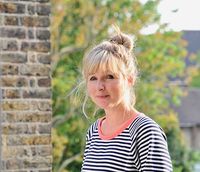
A beautiful garden has many components, from the colors, shapes and textures of the plants to the varying layers and heights of the shrubs and trees. Yet, the latter can often be lacking in small yards. To remedy this, it's worth knowing the resilient trees that will thrive in cities.
Whatever the reluctance to plant trees in outdoor urban spaces – whether root spread or maintenance – most of these concerns can be alleviated if you know the best trees to plant close to a house. It's more important than ever to green up our city spaces and it's easy to start in our own backyards. After all, who doesn't like to sit beneath the shade of a tree on a summer's day?
Trees have multiple benefits too, from improving air quality, absorbing CO2 and reducing noise, to providing shade, cooling effects and preventing flooding by soaking up excess rain water. We spoke to urban landscape gardeners to ask for their top tree recommends for city yards.
8 resilient trees that will thrive in cities
When choosing trees for a courtyard garden or small outdoor urban space, there are various factors to consider, which don't apply in larger, less densely populated areas.
'In urban gardens, we may be considering a terrace with a limited amount of soil for root development,' says landscape designer, Jon Fargion, founder Jon Fargion Design.
'New York City is also a perfect example of where trees have to overcome many challenges like small spaces, high temperatures, compacted soil and pollution.'

Jonathan Fargion grew up in Milan, where he got an MA in environmental architecture from Politecnico di Milano. His academic and professional experiences took him from Italy to Israel, and Hong Kong to Lisbon, ending up in New York. He has a specialization in ornamental horticulture from the New York Botanical Garden, and designs outdoor spaces, whether urban, countryside, or coastal. He has spoken at NYU Casa Italiana, the New York Botanical Garden, and Montclair University to share his experience, and give talks about ecology and gardens.
1. Eastern Redbud (Cercis canadensis)
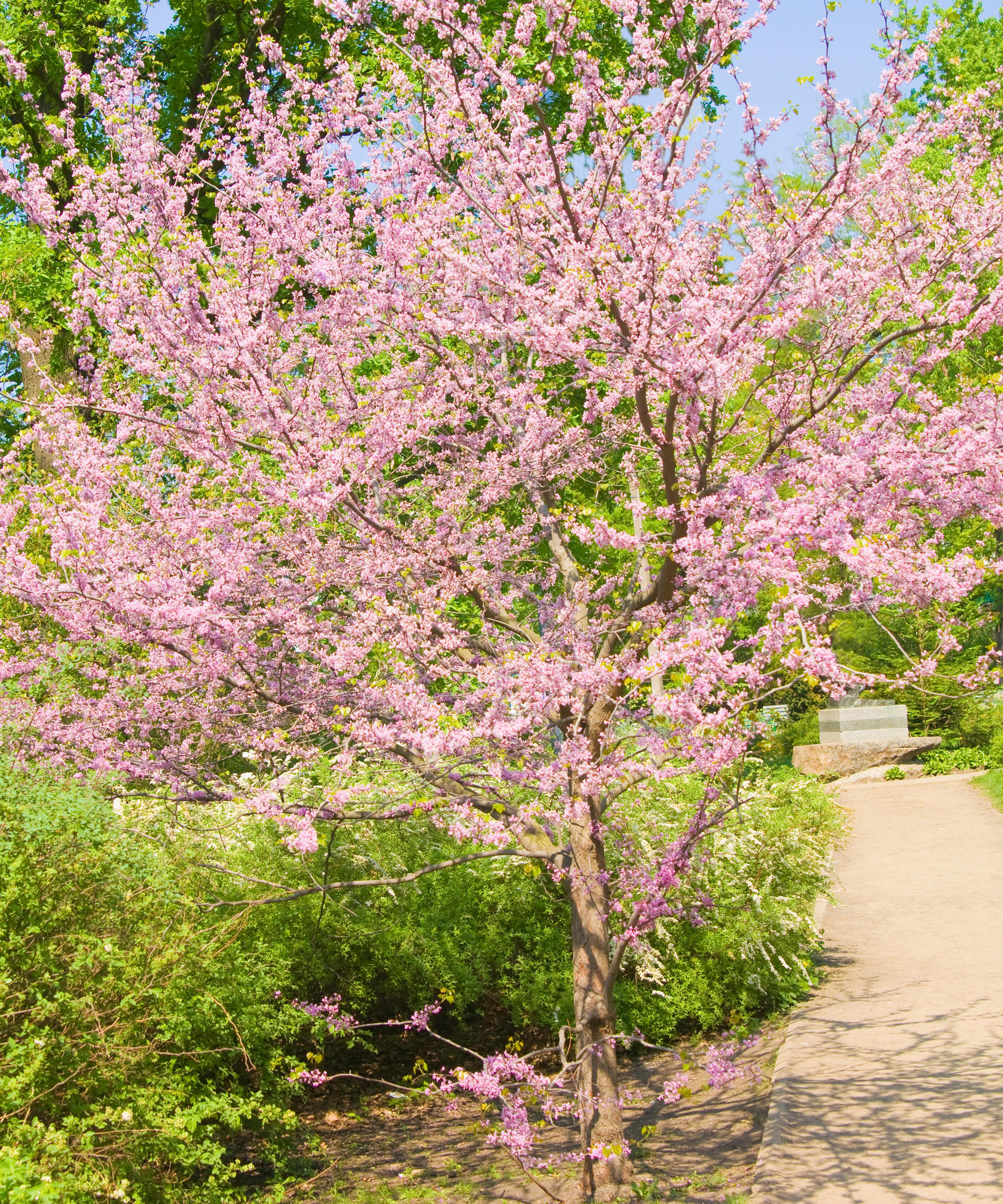
Sometimes referred to as 'Forest pansy', this eastern North American native can either be grown as a deciduous shrub or as a small statement tree. Its compact size, coupled with its pretty pink spring flowers and spectacular fall foliage in shades of orange, red and bronze, make growing Eastern Redbud a savvy choice for small urban outdoor spaces, where every plant needs to earn its place.
Design expertise in your inbox – from inspiring decorating ideas and beautiful celebrity homes to practical gardening advice and shopping round-ups.
'One of the things that I think about most when selecting a tree for our clients is to pick one out that will not get too large,' says Johnny Kunen, owner, Native NY Gardens. 'In the city, space is limited and sunlight can be hard to find in gardens with large buildings surrounding it.
'My goal is to select a native tree that is going to be beneficial ecologically and create a nice aesthetic, while not shading out the rest of the garden. Oftentimes I go with an Eastern Redbud (Cercis canadensis) cultivar, either Ruby Falls or Vanilla Twist.
'These trees don't require much in the way of maintenance, and have proven to be pretty versatile, handling both part shade and full sun, and are even successful on windy rooftops, which is not typically the case for broadleaf trees. They max out at about 8 to 10 feet in height and about 6 to 7 feet in width and bring a beautiful weeping structure to any garden.'
Eastern redbud is also one of New York landscape designer, Jon Fargion's favorite trees to plant in small urban gardens.
'It's a native tree to North-Eastern America and has a beautiful bright pink inflorescence in spring that contrasts the dark bark of its limbs,' says Jon. 'In fact, it's very showy in spring, summer and fall, with beautiful heart shaped leaves and fantastic fall color.
'It stays relatively small so it is very manageable on a terrace and urban backyard and it doesn't produce juicy fruits, so won't stain a stone patio or furniture.'
This Eastern Redbud tree from Fast-Growing Trees will grow well in zones 4-9 and is hardy down to -20ºF.

Based in Brooklyn, Johnny Kunen has worked in New York City landscaping for 15 years, first as a garden maintenance and installation specialist for a small company, before leaving to start a new business with two close friends 8 years ago. Native NY Gardens specializes in native plants and has planted thousands of native species all around the city.
2. Black Tupelo (Nyssa sylvatica)
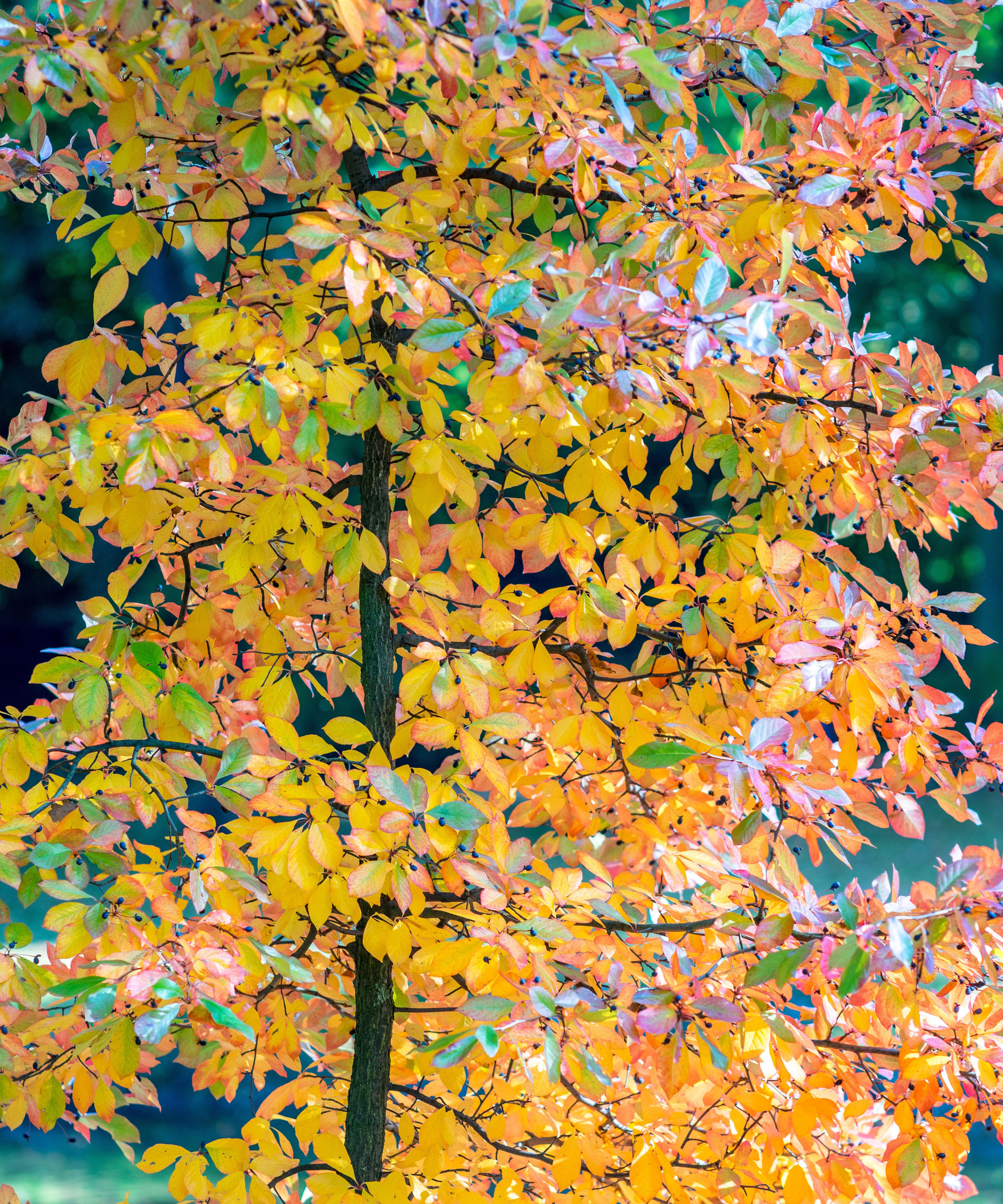
This small, slow-growing tree is another eastern North American native species with spectacular fall foliage. A low-maintenance tree, Black Tupelo can be grown in clay, sandy or loamy, moist, well-drained (acidic-neutral) soils. However, it doesn't like to be transplanted, so will do well in a container if space is limited.
'The Black Tupelo, (Nyssa sylvatica) is another tree we love to use, particularly on rooftops–especially the 'Wildfire' cultivar,' says Johnny. 'This cultivar of the Black Tupelo is a versatile tree that can handle full sun, and part shade, and a variety of soil conditions.
'It has beautiful red tipped new growth and incredible fall color. It handles wind well and adds gorgeous color to any garden. This tree can get very large (30 to 40ft) if planted in the ground, but works well in a container garden and stays in the 10 to 15ft. range in those conditions.
As is true with the Eastern redbud, we suggest planting Black Tupelo in the spring or fall and giving them a few feet of spacing on either side.
'One thing to consider for these trees, if you are planting them in windy conditions, is to periodically thin them out a bit to reduce wind resistance and allow wind to pass through them more easily.
This will create less pressure on the branches and roots when storms occur. It will also improve air circulation and light penetration which will help to reduce the risk of disease.'
The steel blades on these Classic Cut Pruners from Fast-Growing Trees are sharp enough to trim branches of 3/4" and have a non-slip grip, so are suitable for thinning small trees.
3. Pitch Pine (Pinus Rigida)
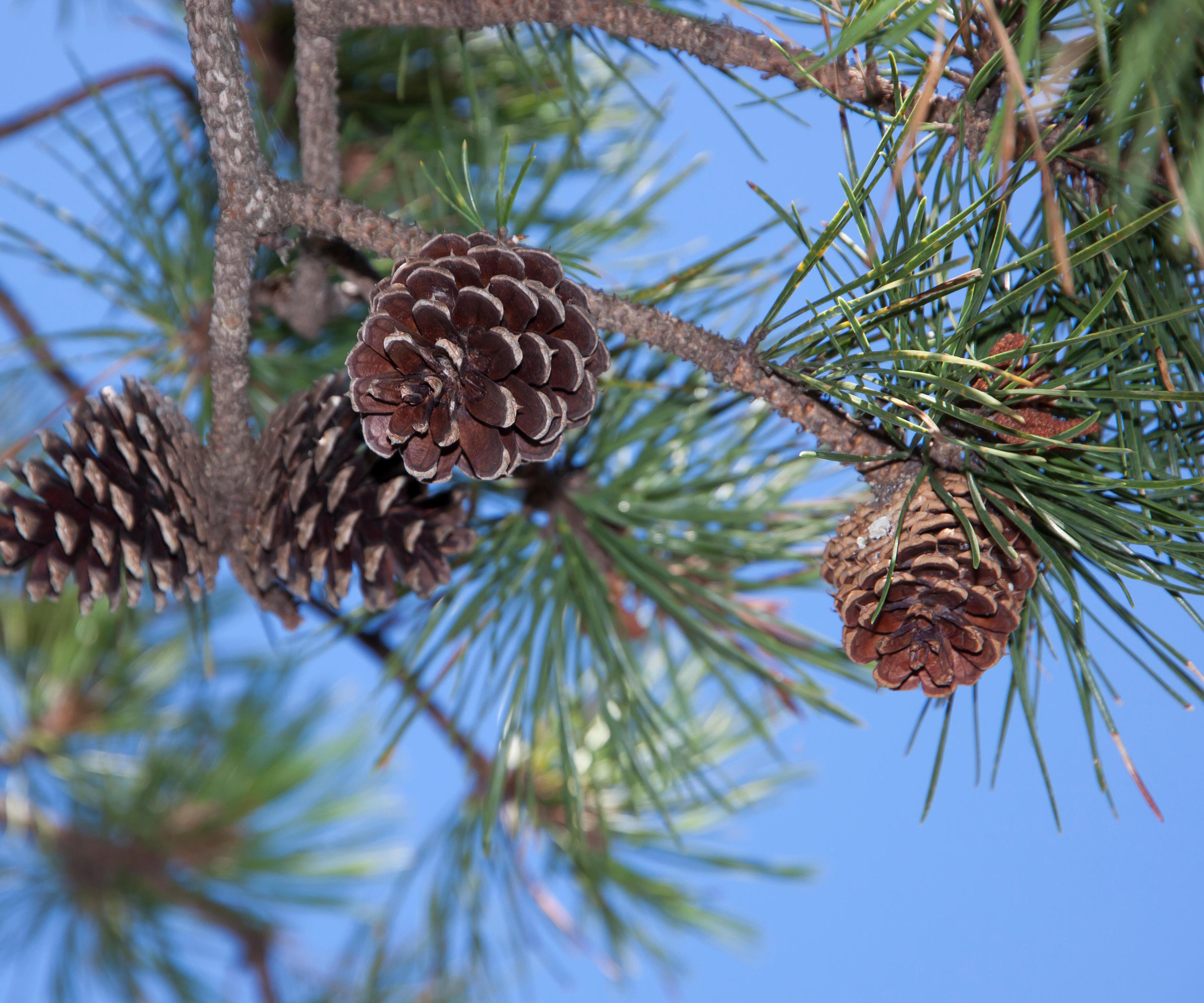
This elegant evergreen also originates in eastern North America, and will grow in a variety of soil types, even those that are low in nutrients. This, and the fact that it is pretty drought-tolerant, make it a good contender for 'hot in the city' outside spaces.
Pitch pine also roots deeply, rather than widely, so it's unlikely to cause issues to paving or nearby structures. This also gives it stability against high winds. However, it doesn't like shade, so bear this in mind when planting it.
'The native Pitch Pine, Pinus Rigida, is a tree that we like to work with, specifically on rooftops,' says Johnny. 'It is a tree that's common up and down the east coast, from Maine to Georgia, mostly along the Atlantic coasts. These trees can get 50 to 70 feet tall in ground, but take on a more bonsai form when planted in containers.
'We have seen them top out around 10 feet in containers and survive long periods of drought. This is a tree that we would only use for full sun areas, but one that handles wind very well.'
These Geopot Fabric Planters from True Leaf Market are excellent value and are made from breathable BPA-free plastic to allow for drainage and aeration of the plant's root system, if you want to grow your tree in a pot.
4. Japanese maple (Acer palmatum)
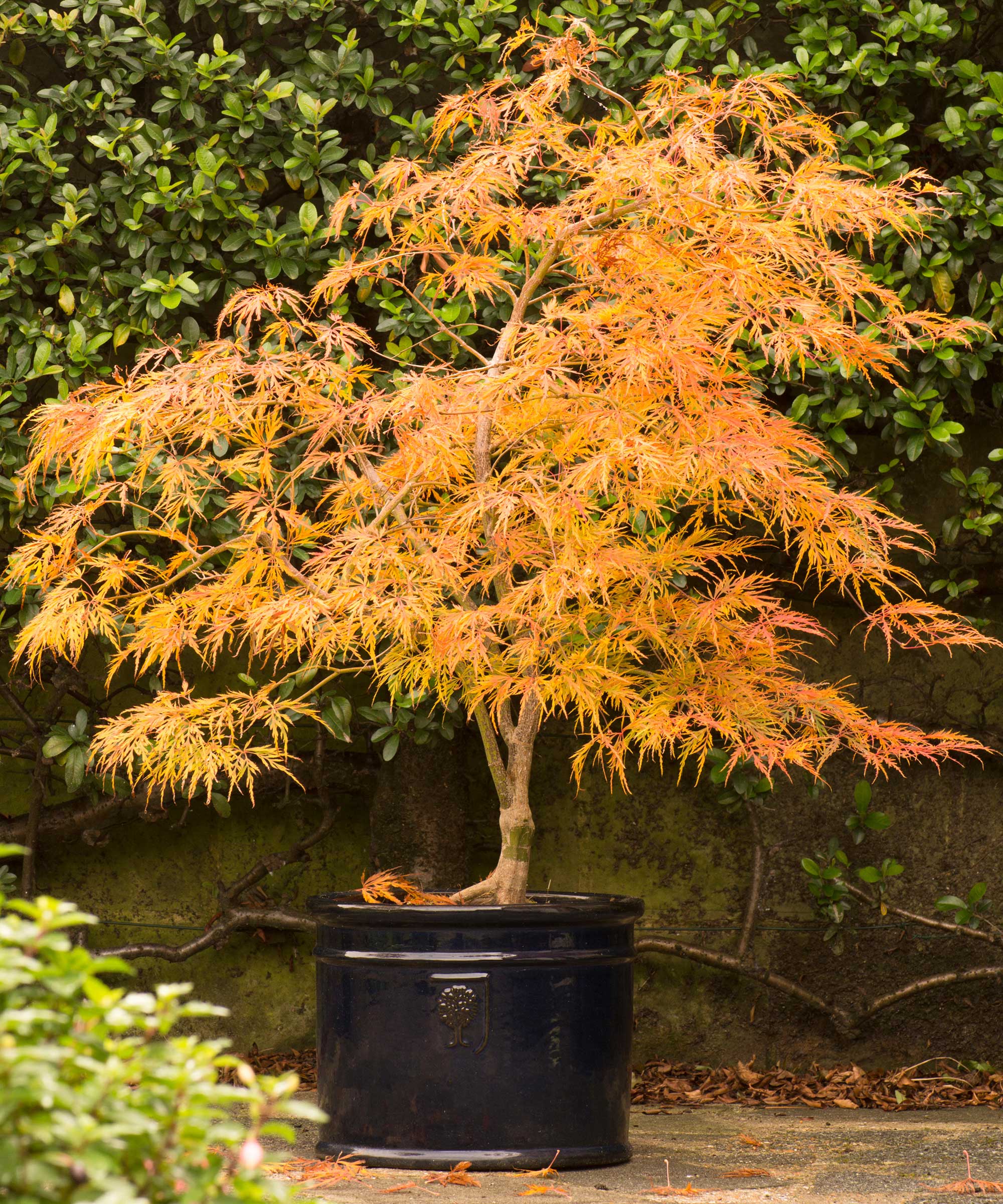
The wonderful and wide-ranging leaf color on Japanese maple trees makes them a favorite for an eye-catching show of fall foliage in city spaces. Also known as Acers, these delicate looking beauties are surprisingly low-maintenance, if provided with the right conditions.
Although, there are numerous Acer varieties, many are slow-growing and will remain small. They can thrive in containers or in the ground, preferring fertile, free-draining soil. However, the leaves are susceptible to scorching, either from the sun or frost and icy winds, so give Japanese maples a sheltered spot and cover them in late fall before the frost arrives, if you live somewhere with harsh winter weather.
'Japanese maple is a good choice for limited spaced gardens, as it doesn't grow to become very large,' says Jon Fargion. 'There are many different cultivars and forms, which leaves the owner a wide range of options, such as multi-stem, single stem, different leaf colors and shapes etc.
'It doesn't produce showy flowers, but its leaves and fall color surpasses in beauty any other flowering trees, especially in fall. Japanese maple will do fine and look elegant in a small container, even if it becomes pot bound. It is relatively easy to care for, if it is given a partly shaded spot.'
5. Crape Myrtle (Lagerstroemia natchez)
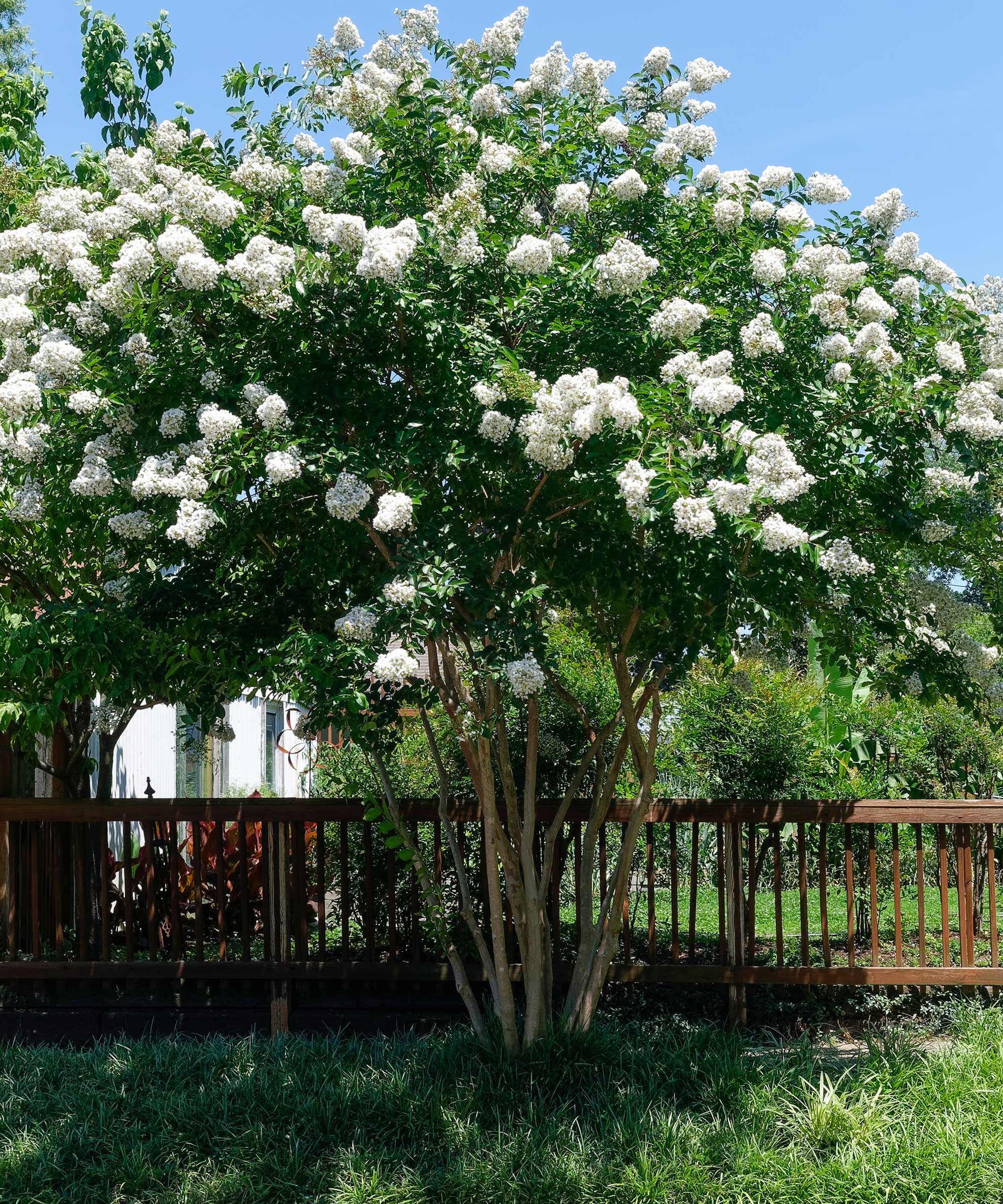
Although native to Asia, these pretty flowering trees have become the state shrub of Texas, and offer seasonal interest in warmer or temperate zones.
However, growing Crape Myrtle in pots is still worthwhile in cooler regions, where they may need over-wintering in USDA hardiness zones 6 and below. These trees are drought-tolerant once established, so suit city spaces with hot summers, and many varieties will remain modest in size.
'Crape Myrtle (Lagerstroemia natchez) has a beautiful form, especially when multi-stem - it's one of my favorite tree shapes,' says Jon. 'It has the most beautiful bark, with an array of different pale colors along the nervy trunks. The older it gets the more intense the colored venation emerges.
'It has a very showy inflorescence in summer time. Although, the flower color depends on the cultivar. Natchez is white, but there are also hot pink, red and orange options, with small dry fruits that don't create too much fuss.
'This tree has beautiful Fall color, and an attractive winter sculptural look too. It stays relatively small but requires a sunny location.'
6. Amelanchier canadensis (Serviceberry)
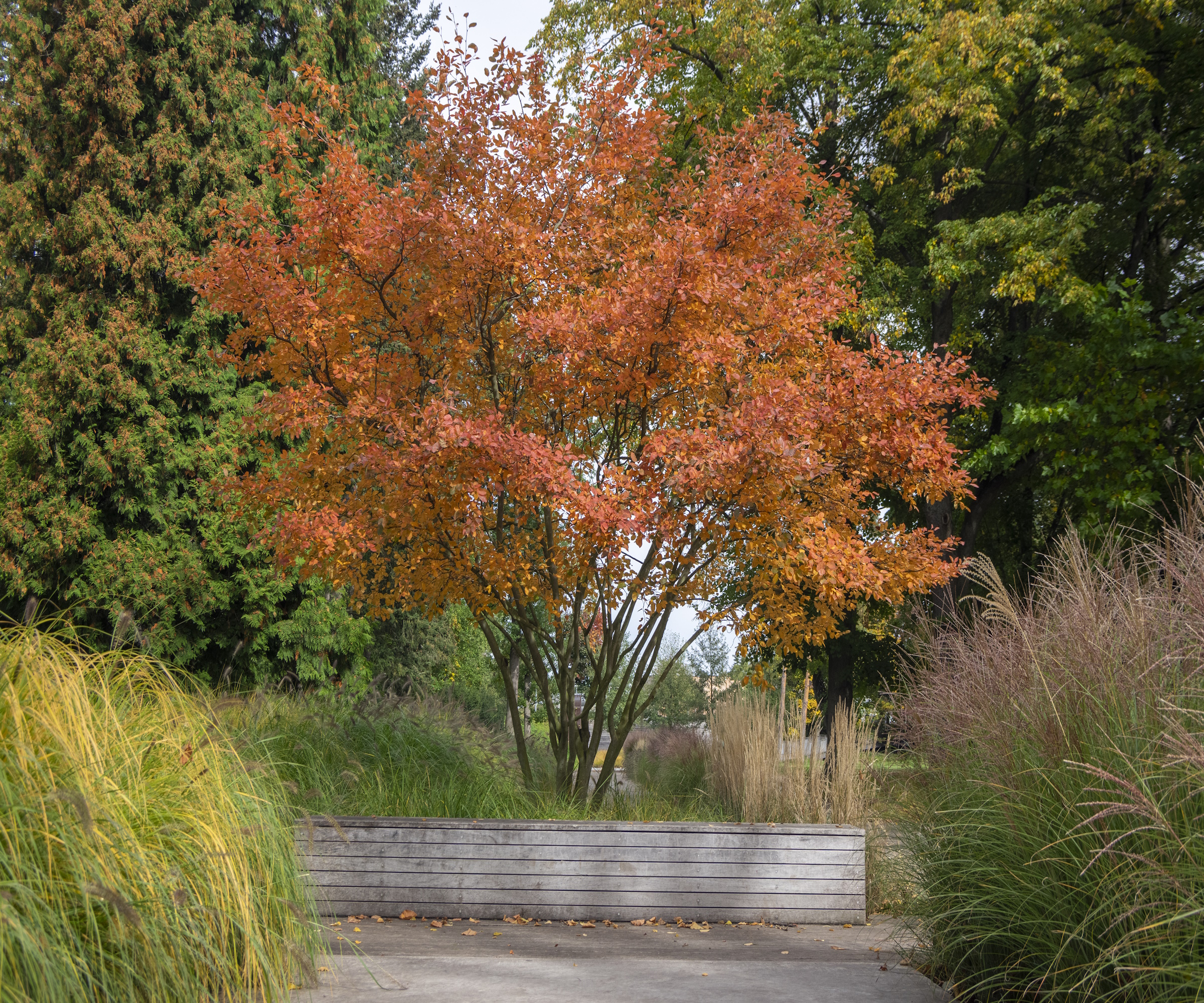
Native trees and plants are generally a better option than imported varieties, as they are adapted to the local conditions, so require less maintenance. They also provide food and shelter for wildlife.
The beautiful Serviceberry tree is a diminutive yet hardy specimen from the eastern US, loved for its flowers and foliage. It's these qualities that earn it its reputation as a tough urban tree.
'This small native tree is a multitasker in the best way and I use it all the time,' says New York-based landscape designer, Kat Aul Cervoni, founder, Staghorn Living. 'It has early spring flowers, edible summer berries, and a warm, glowing show in fall.
'Its modest size makes it perfect for tighter spaces like sidewalk beds, entry gardens, or tucked-in terrace corners, even in rooftop container gardens.
Serviceberry thrives in full sun to part shade, prefers well-draining soil, and benefits from light pruning to maintain its form. A bonus is that this native tree supports pollinators and birds too.'
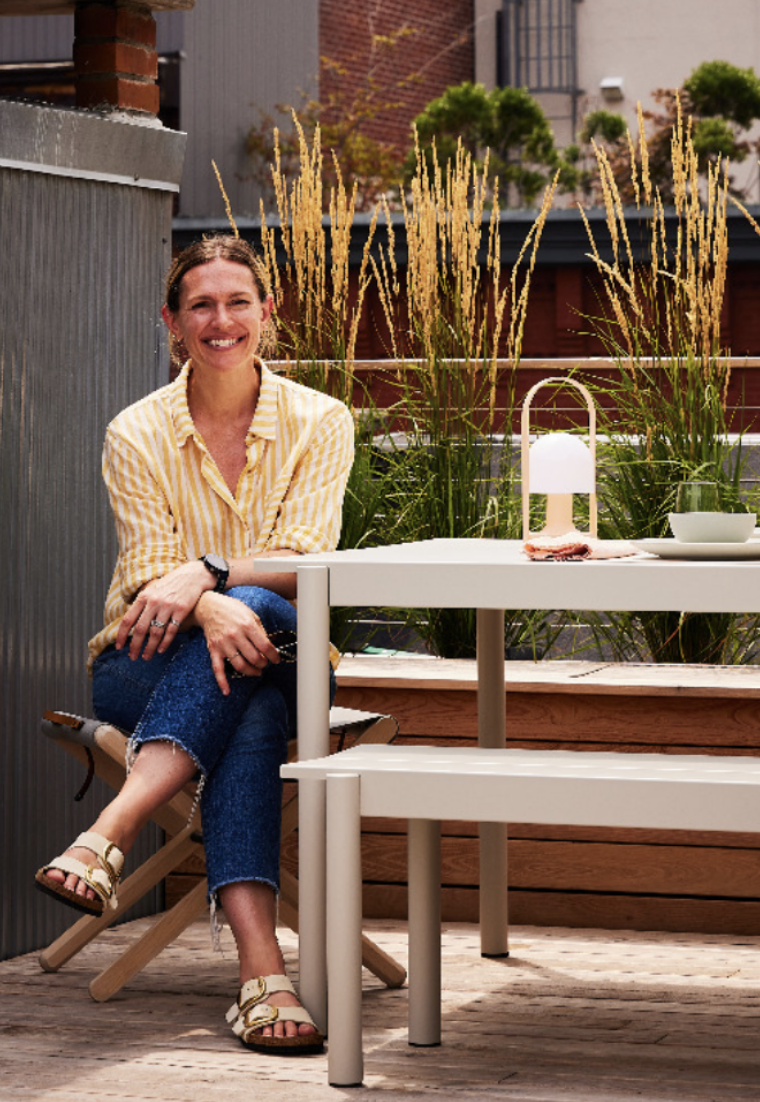
Landscape designer, Katherine "Kat" Aul Cervoni is the founder and principal of Staghorn Living. Kat creates outdoor spaces that become natural extensions of a home’s interior. A member of the Ecological Landscape Alliance and the Association of Professional Landscape Designers, she also mentors young plant enthusiasts and upcoming designers.
7. Magnolia virginiana (Sweetbay Magnolia)
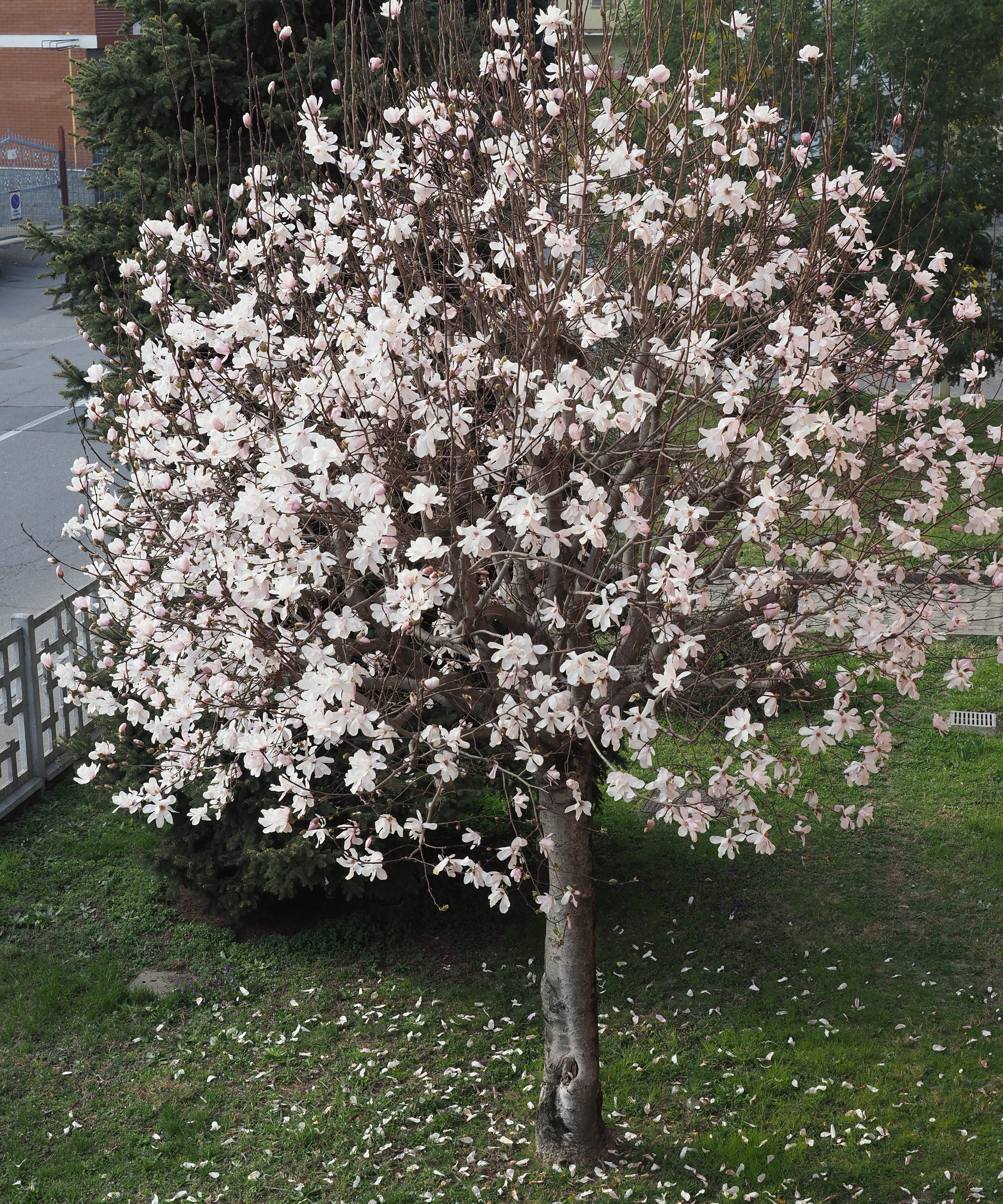
These pretty fast-growing flowering trees can be deciduous or evergreen, depending on how mild or cold the winters–and can be found in the wild from Florida up to Long Island and beyond.
Grown for their large scented flowers, which appear in spring, Sweetbay Magnolias are a familiar sight on city sidewalks, parks and gardens, where its charming shape brings an attractive natural, architectural feel to its surroundings.
'This is a graceful, semi-evergreen magnolia with creamy white blooms and a subtle lemony scent,' says Kat. 'I love that these trees bring an elegance to city gardens without overwhelming them.
'Magnolia virginiana is adaptable to moist soils (even clay), handles part shade, and grows larger over time, so give it a bit more space to spread out. I love using it near seating areas for fragrance and movement, and while pruning isn’t essential, shaping lower limbs can help open up its beautiful form.
'I like it’s upward V-shape which means it’s less likely to take up horizontal seating and living space in an outdoor area.'
8. Cornus kousa (Kousa Dogwood)
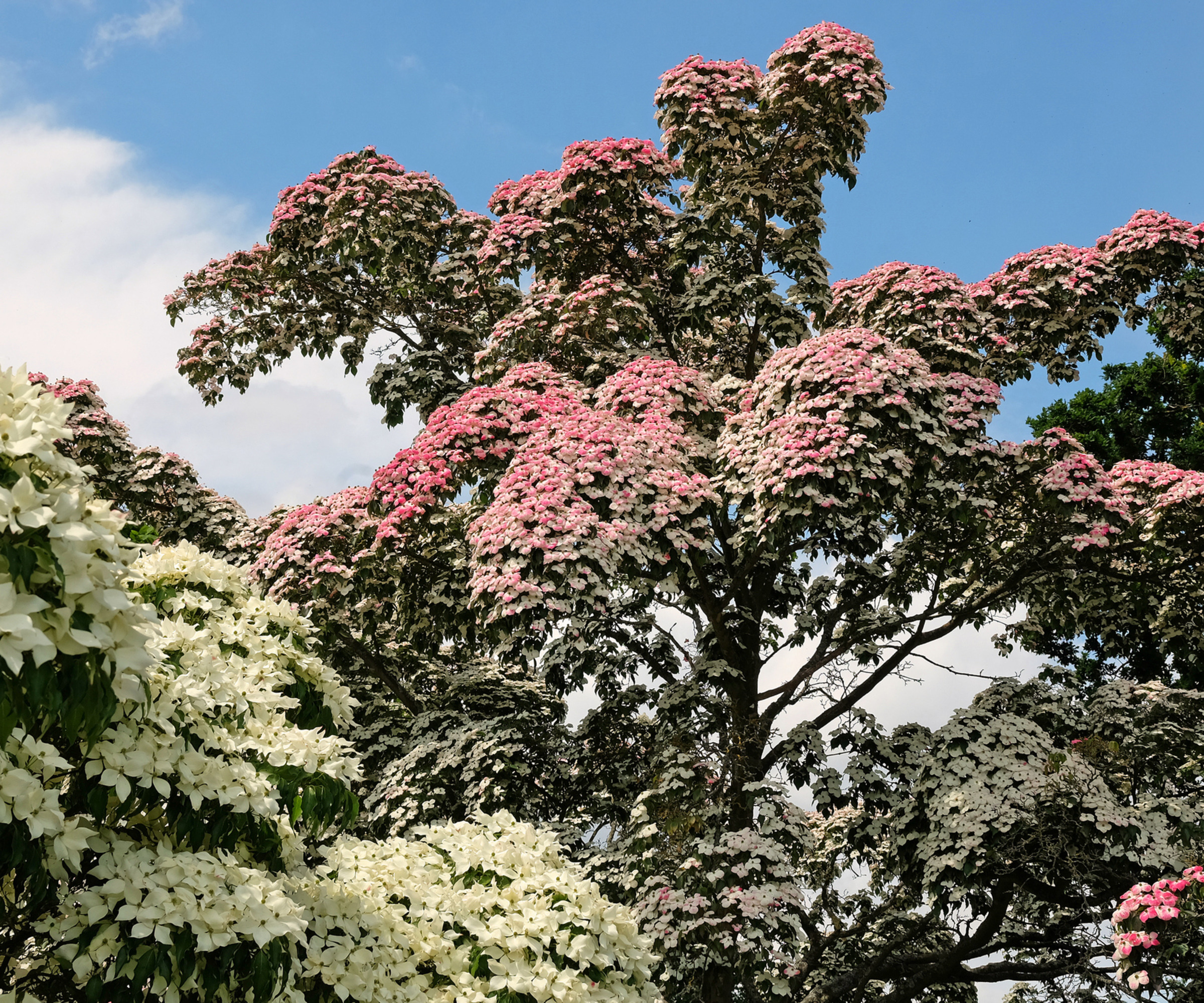
Also known as Chinese Dogwood, this tree is a member of the Cornaceae family and an Asian cousin of the American Cornus florida or flowering Dogwood.
However, Cornus kousa tends to be more cold hardy and disease-resistant than native dogwood trees. It's a slow grower so won't get too large and it likes a sunny spot with a little afternoon shade.
'This tree is such a reliable favorite for urban planting and offers layer upon layer of seasonal interest,' says Kat. 'It has mottled bark and produces star-like flowers in late spring (white or pink), raspberry-like fruit, and vibrant fall foliage.
'I’ve found that Kousa Dogwood more tolerant of city stressors than its American cousin, making it a smart pick for street-side or courtyard planting. Full sun to part shade is ideal, and it does best in slightly acidic, well-draining soil. Minimal pruning is required, just a little shaping in winter if needed.'
There are many other trees and shrubs that are beneficial in cities. Research from the Royal Horticultural Society found that the Cotoneaster franchetti, which can be grown as a bushy shrub, or as a small tree, absorbed 20% more air pollution than other types of hedge. Growing more of these shrubs, hedges and trees will contribute to cleaner, cooler air in your neighborhood.
'On major city roads with heavy traffic we’ve found that the species with more complex denser canopies, rough and hairy-leaves such as cotoneaster were the most effective,' said Dr Tijana Blanusa, lead researcher and RHS Principal Horticultural Scientist.
Jacky Parker is a freelance lifestyle journalist and writer, producing a wide range of features for magazines and websites. She has written for Homes & Gardens and its sister titles, Livingetc and Country Homes & Interiors for more than 15 years, both as a freelance contributor and staff member, regularly reporting on the latest interiors, gardens and lifestyle inspiration, speaking to experts in their respective fields and discovering the newest tips.
You must confirm your public display name before commenting
Please logout and then login again, you will then be prompted to enter your display name.
